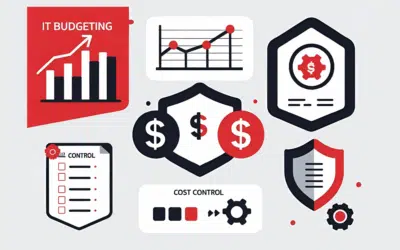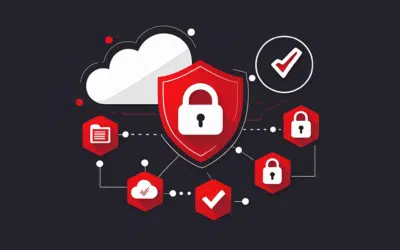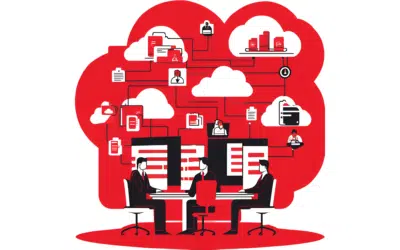Meeting the IT needs of a business using internal resources can be difficult and expensive. Meanwhile, outsourcing IT services may prompt questions about control and security. One of the ways the market has evolved is through Co-Managed IT Services, which provide a way for businesses to outsource some of their IT needs to a third party while maintaining control over those services. In this article, we will explore what Co-Managed IT Services are, the benefits they offer, and some example use cases. We will also discuss how businesses can view their own operations with Co-Managed IT Services and take advantage of the cost savings and efficiencies they provide.
What are Co-Managed IT Services?
Co-Managed IT Services is an agreement between a business and an external IT service provider in which the provider agrees to supplement the internal IT staff of the company. The service provider will manage some of the IT needs of the business according to the agreement, freeing up the internal staff to focus on other tasks. Co-Managed IT Services can be used to supplement in-house staff that may be overworked or lack certain skill sets, but it is not the same as Managed IT.
The Benefits of Co-Managed IT Services
Co-Managed IT Services can provide several advantages for businesses deciding between internal and external IT resources. Perhaps most importantly, businesses can free up their internal staff to focus on growth and transformation tasks, knowing that their IT needs are being taken care of by a team of professionals. This is being done without losing control over the project, as you can choose how much of your work will be done by the external team. Another outcome of this is cost savings, as Co-Managed IT Services can help businesses avoid the need to hire additional staff or provide training on new technologies.
Another benefit of Co-Managed IT Services is that businesses can take advantage of the expertise of the service provider. Service providers will typically have a team of experts who are up-to-date on the latest technologies and trends in the IT industry. This can be beneficial for businesses who want to implement new technologies but lack the internal resources to do so. Additionally, service providers often have access to tools that businesses may not be able to obtain on their own.
Finally, Co-Managed IT Services can provide businesses with increased flexibility and scalability. Businesses can scale up or down the level of services they receive from the service provider according to their needs. This can be helpful for businesses that expect changes in their IT needs, such as during a period of growth or during an acquisition.
Use Cases of Co-Managed IT Services
A powerful aspect of co-managing IT services is the variety of their use cases. This type of service can be adapted to various business models, types, and sizes:
- A small business that has limited IT staff can use Co-Managed IT Services to outsource its core IT needs. This includes setting up new computers, maintaining the network, and providing user support. In this arrangement, the limited internal IT team can focus on initiatives that move the business forward, leaving important but mundane tasks like software updates and help desk services to their co-managed partner.
- A medium-sized business with an overworked internal IT staff can use Co-Managed IT Services to supplement their staff. The service provider can take on tasks such as managing the servers, performing system backups, and monitoring the network. This will free up the internal staff to focus on the highest-value tasks.
- A large enterprise with a global workforce can use Co-Managed IT Services to manage its IT infrastructure in multiple countries. The service provider can be responsible for tasks such as setting up new offices, maintaining the network, and providing user support. This will allow the enterprise to focus on its core business.
Below are 5 example use cases of Co-Managed IT services:
Infrastructure: Overseeing a company’s infrastructure can be a daunting task, especially as the infrastructure grows more complex. Co-managed IT services can help to ease the burden by sharing the responsibility between the external provider and the internal team. This way, each party can focus on their area of expertise, and the overall infrastructure can be managed more effectively. For example, internal resources can manage the network while the co-managed provider can focus on data storage and disaster recovery. The two companies can work together to provide a comprehensive solution that meets the needs of the business.
Security: One of the most important aspects of IT management is security. With so much data being stored and accessed electronically, it’s critical to have safeguards in place to protect against unauthorized access and data loss. Co-managed IT services can be a valuable tool for managing security, as they provide an extra layer of protection against potential threats. In addition to traditional security measures such as firewalls and antivirus software, co-managed IT services can help to monitor activity on your network and identify potential security risks. By working with a team of experienced IT professionals, you can be sure that your security systems are up-to-date and effective at protecting your data, freeing your internal team to work on new projects or releasing new code.
Software patches and updates: In today’s business world, technology is constantly evolving. This can make it difficult for companies to keep their systems up-to-date, particularly when it comes to software patches and updates. Co-managed IT services can help to take some of the burden off of in-house IT staff. By working with an MSP, businesses can receive expert guidance on which updates are most important and how to implement them quickly and efficiently.
Network Operations Center: Co-Managed IT Services can be used to manage network operations centers by providing a way for network administrators to outsource some of the network management tasks. This can free up time for the network administrator to focus on other tasks, such as network security or performance tuning. In addition, co-managed IT services can provide expert assistance with network administration tasks, such as troubleshooting network issues or configuring network devices.
Help Desk: Businesses can outsource their help desk management to an MSP. This includes tasks such as answering customer questions, troubleshooting technical issues, and providing support for new software releases. This can be an effective way to manage help desks, as it can allow businesses to focus on their core competencies while still providing support for their users.
Imagining Your Own Business with Co-Managed IT Services
Co-Managed IT Services can be a great solution for businesses that want to improve efficiency, save costs, or gain access to expert knowledge without the inherent tradeoffs of an encompassing Managed IT service. If you’re not sure whether your business could benefit from Co-Managed IT Services, here are some questions to ask yourself:
- Do you have adequate internal resources to manage your IT needs?
- Do you have access to the tools necessary to manage your IT needs?
- Would increased efficiency save your business time or money?
- Would being able to scale up or down the level of services be helpful for your business?
You can also refer to this blog for an in-depth review: When Are Co-Managed IT Services the Right Fit?
If any of these questions resonate with you, then Co-Managed IT Services may be a good solution for your business. Have a chat with us today about how Axxys Technologies can partner with your organization to Co-Manage your IT services.








